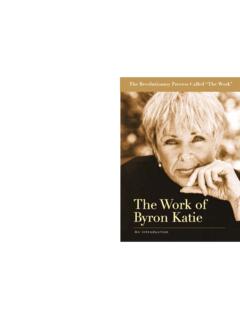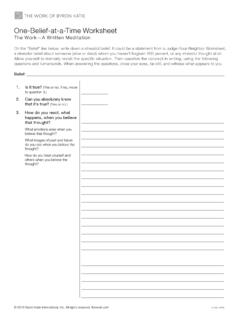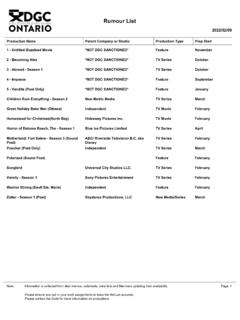Transcription of NBER WORKING PAPER SERIES THE $800 BILLION PAYCHECK ...
1 In Bhutta et al. NBER WORKING PAPER SERIESTHE $800 BILLION PAYCHECK PROTECTION PROGRAM: WHERE DID THE MONEY GO AND WHY DID IT GO THERE?David AutorDavid ChoLeland D. CraneMita GoldarByron LutzJoshua K. MontesWilliam B. PetermanDavid D. RatnerDaniel Villar VallenasAhu YildirmazWorking PAPER 29669 BUREAU OF ECONOMIC RESEARCH1050 Massachusetts AvenueCambridge, MA 0213 January 2022 Key data for this PAPER were provided for research by ADP, LLP. ADP approved this PAPER s topic ex-ante and reviewed the PAPER prior to distribution to ensure it did not reveal confidential information about ADP s clients or business model. Coauthors Goldar and Yildirmaz were involved in making the data available to several research teams as employees of the ADP Research Institute.
2 At the Federal Reserve Board, we thank Christopher Kurz and Norman Morin for support, Kendra Robbins and Eleanor Warren for excellent research assistance, and Kevin Moore for updating the analysis in Bhutta et al. (2020). We thank Tolga Tuncoglu of ADP for superb assistance with matching the SBA PPP loan data into the ADP data. We thank Michael Dalton, Andrew Goodman-Bacon, Erik Hurst, Katie Lim, Joseph Nichols, Ryan Nunn, Matthew Shapiro, Liyang Sun, and Eric Zwick for helpful discussion. Autor acknowledges financial support from the Smith Richardson Foundation (#20202252), Accenture LLP (#027843-0001), the Andrew Carnegie Fellowship (G-F-19-56882), and the Washington Center for Equitable Growth (APP-01666).
3 The analysis and conclusions set forth here are those of the authors and do not indicate concurrence by other members of the Federal Reserve Board research staff, by the Board of Governors, or by ADP. ADP s data privacy policy can be found at The views expressed herein are those of the authors and do not necessarily reflect the views of the National Bureau of Economic WORKING papers are circulated for discussion and comment purposes. They have not been peer-reviewed or been subject to the review by the NBER Board of Directors that accompanies official NBER publications. 2022 by David Autor, David Cho, Leland D.
4 Crane, Mita Goldar, byron Lutz, Joshua K. Montes, William B. Peterman, David D. Ratner, Daniel Villar Vallenas, and Ahu Yildirmaz. All rights reserved. Short sections of text, not to exceed two paragraphs, may be quoted without explicit permission provided that full credit, including notice, is given to the $800 BILLION PAYCHECK Protection Program: Where Did the Money Go and Why Did it Go There?David Autor, David Cho, Leland D. Crane, Mita Goldar, byron Lutz, Joshua K. Montes, William B. Peterman, David D. Ratner, Daniel Villar Vallenas, and Ahu YildirmazNBER WORKING PAPER No. 29669 January 2022 JEL No. E65,H2,J38 ABSTRACTThe PAYCHECK Protection Program (PPP) provided small businesses with roughly $800 BILLION dollars in uncollateralized, low-interest loans during the pandemic, almost all of which will be forgiven.
5 With 93 percent of small businesses ultimately receiving one or more loans, the PPP nearly saturated its market in just two months. We estimate that the program cumulatively preserved between 2 and 3 million job-years of employment over 14 months at a cost of $170K to $257K per job-year retained. These estimates imply that only 23 to 34 percent of PPP dollars went directly to workers who would otherwise have lost jobs; the balance flowed to business owners and shareholders, including creditors and suppliers of PPP-receiving firms. Program incidence was highly regressive, with about three-quarters of PPP funds accruing to the top quintile of households.
6 This compares unfavorably to the other two major pandemic aid programs, enhanced UI benefits and Economic Impact Payments ( stimulus checks). PPP s breakneck scale-up, its high cost per job saved, and its regressive incidence have a common origin: PPP was essentially untargeted because the United States lacked the administrative infrastructure to do otherwise. The more targeted pandemic business aid programs deployed by other high-income countries exemplify what is feasible with better administrative systems. Building similar capacity in the would enable greatly improved targeting of either employment subsidies or business liquidity when the next pandemic or other large-scale economic emergency occurs, as it surely will.
7 David AutorDepartment of Economics, E52-438 Massachusetts Institute of Technology 77 Massachusetts Avenue Cambridge, MA 02139and ChoBoard of Governors of the Federal Reserve System20th and C Streets, NWMail Stop 80 Washington, DC D. CraneFederal Reserve Board20th Street and C Street, NW Washington, DC GoldarIndependent Lutz Federal Reserve Board of Governors Research Division 20th and C Streets, NW Washington, DC 20551-0001 K. MontesFederal Reserve's Board of Governors20th & C St. NWMS- 80 Washington, DC B. PetermanFederal Reserve Board of Governors20th & C St. NWWashington, DC D. RatnerBoard of Governors of the Federal Reserve System 20th Street and Constitution Avenue Washington, 20551 Villar Vallenas Federal Reserve Board Yildirmaz The Coleridge the early weeks of the COVID-19 pandemic, many small businesses in the United Stateswere in precarious financial condition: revenues had plunged, access to credit was in many casesinadequate or absent, and large-scale layoffs and closures had already occurred (Bartik et al.)
8 ,2020a,b). The potential consequences of widespread business failure were not confined to businessowners. Since approximately 47 percent of US workers were employed by small businesses prior tothe pandemic (SBA, 2019), these closures held the potential for vast job loss. Over the longer term,widespread firm closures could slow the subsequent economic recovery by destroying intangible firmcapital, liquidating high quality worker-firm matches, and forcing the costly reallocation of aid these distressed businesses, Congress enacted the PAYCHECK Protection Program (PPP),which provided uncollateralized, low-interest loans of up to$10 million to firms with fewer than 500employees loans that were forgivable on the condition that recipient firms maintained employmentand wages at close to pre-crisis levels in the two to six months following loan receipt.
9 The scaleof the aid provided was extraordinary. By the time the program concluded in mid-2021, around$800 BILLION in loans had been extended. Despite facing initial capacity constraints, the PaycheckProtection Program was notably successful in distributing a vast number of loans in short order:the take-up rate among eligible firms was 94 percent. Crucial to this rapid rollout was the decisionto enlist the private sector to oversee the origination of all PPP loans, with the Small BusinessAdministration (SBA) serving as the PAYCHECK Protection Program was ultimately comparable in size to the two other ma-jor federal transfer programs enacted in response to the pandemic: expenditures on householdpayments stimulus checks were around$800 BILLION .
10 And expenditures on expanded unem-ployment benefits totalled roughly$680 BILLION under the Federal Pandemic Unemployment Com-pensation program (FPUC), Pandemic Unemployment Assistance program (PUA), and PandemicEmergency Unemployment Compensation (PEUC) (CRFB, 2021). As another standard of compar-ison, each of these three programs was roughly comparable in size to theentireAmerican Recoveryand Reinvestment Act of 2009 (ARRA), the principal fiscal stimulus enacted in response to theGreat Recession of PAPER explores who ultimately benefited from those$800 BILLION in PAYCHECK ProtectionProgram loans: concretely, where did the money go and why did it go there?















